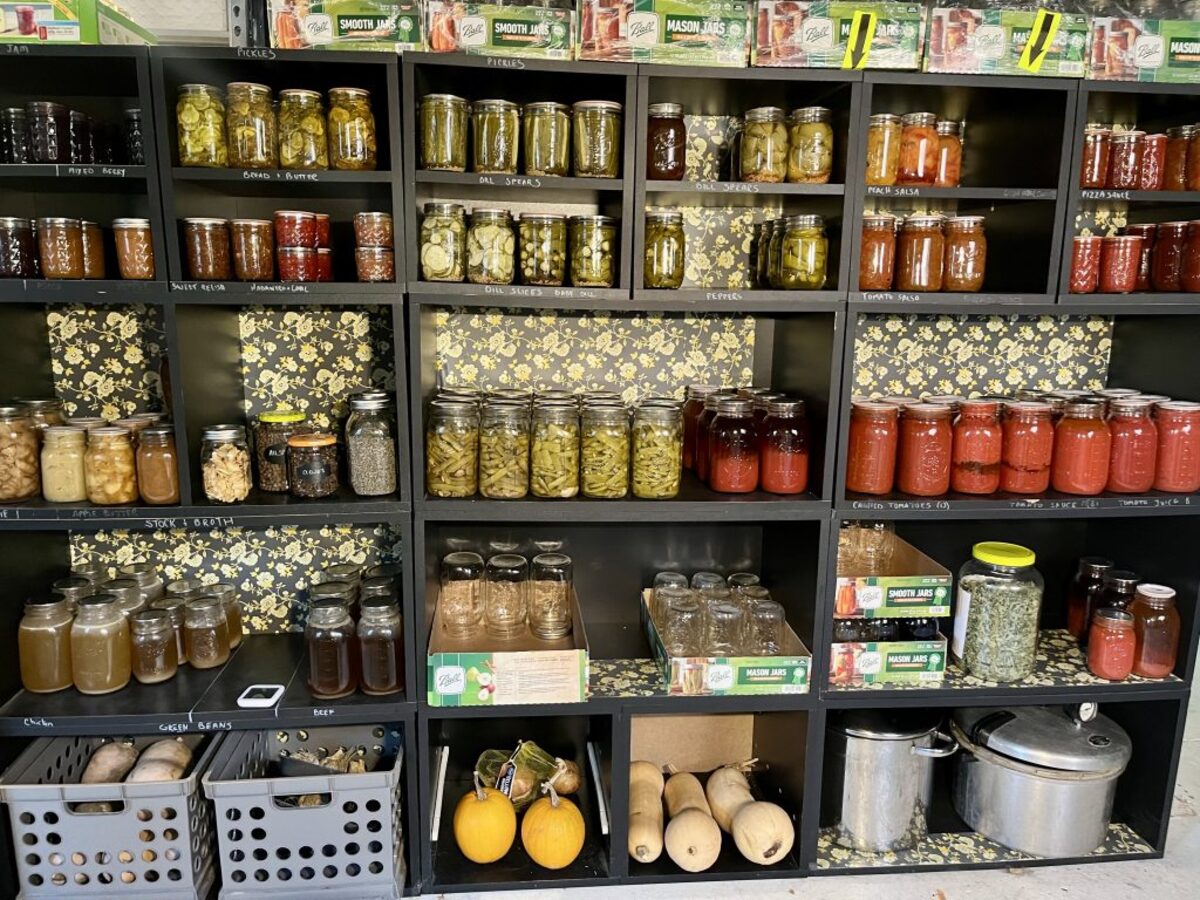

Articles
How To Store Food For Long Term
Modified: January 18, 2024
Discover essential articles on how to store food for long term. Learn effective techniques for preserving and extending the shelf life of your food supplies.
(Many of the links in this article redirect to a specific reviewed product. Your purchase of these products through affiliate links helps to generate commission for Storables.com, at no extra cost. Learn more)
Introduction
Welcome to our comprehensive guide on how to store food for the long term. In uncertain times, having a stockpile of food can provide peace of mind and ensure that you and your loved ones are well-prepared for any situation. Whether you’re preparing for emergencies, planning for extended trips, or simply looking to reduce food waste, storing food for the long term is a valuable skill to have.
The key to successful long-term food storage lies in understanding the factors that affect shelf life, choosing the right storage containers, and implementing proper storage techniques. With a little knowledge and preparation, you can store a wide variety of food items, including dry goods, canned foods, frozen goods, fresh produce, meat, fish, poultry, dairy products, and beverages.
In this guide, we will explore each category in detail, providing you with essential tips and techniques to maintain the quality and maximize the shelf life of your stored food. We’ll also discuss the importance of inventory management and rotation to ensure that you’re consuming and replenishing your stored food supply in a timely manner.
By following the advice in this guide, you’ll be able to build a well-stocked pantry that can sustain you and your family during times of need and emergencies. So let’s dive in and learn how to store food for the long term!
Key Takeaways:
- Proper long-term food storage is essential for emergency preparedness, reducing food waste, and ensuring a reliable food supply. By following storage guidelines and practicing inventory management, you can build a sustainable pantry for any situation.
- Maintaining optimal storage conditions, utilizing airtight containers, and practicing stock rotation are key to extending the shelf life of stored food. By implementing these tips, you can minimize waste and enjoy a well-stocked and sustainable food supply.
Read more: How To Store Lard Long Term
Importance of Storing Food for Long Term
Storing food for the long term is not only a smart and practical choice but also a way to ensure that you have access to vital nutrition and sustenance in times of need. Here are a few key reasons why storing food is important:
- Emergency Preparedness: Natural disasters, power outages, and other unforeseen events can disrupt the food supply chain and leave you without access to fresh food. Having a well-stocked pantry can provide a safety net during emergencies, allowing you to sustain yourself and your family until normalcy is restored.
- Financial Savings: By purchasing food items in bulk and storing them for the long term, you can take advantage of cost savings and avoid inflation. Food prices can fluctuate, but when you have a stockpile, you are insulated from sudden price increases.
- Food Security: Storing food for the long term ensures that you have a secure and reliable source of food in case of job loss, economic downturns, or other financial hardships. It provides peace of mind knowing that you have a supply of food to fall back on, reducing stress and anxiety.
- Reducing Food Waste: The average household often wastes a significant amount of food due to spoilage or expiration. By storing food for the long term, you can extend the shelf life of your groceries and minimize food waste. It’s an environmentally friendly practice that helps conserve resources and reduces your carbon footprint.
- Convenience: Having a well-stocked food supply at home allows you to easily prepare meals, especially during busy times or when fresh ingredients are not readily available. It saves you from frequent grocery trips and ensures you always have ingredients on hand to create delicious and nutritious meals.
Storing food for the long term is an investment in your well-being and resilience. It provides a sense of security and independence, knowing that you are prepared for whatever challenges might arise. So, let’s explore the factors to consider before storing food to ensure the best outcomes.
Factors to Consider Before Storing Food
Before you start storing food for the long term, it’s important to consider certain factors to ensure the quality and safety of your stored items. Here are some key factors to keep in mind:
- Storage Environment: The storage environment plays a crucial role in determining the shelf life of your food. It’s essential to store your food in a cool, dry, and dark place. Excess heat and moisture can lead to spoilage and the growth of mold and bacteria. Keep your storage area away from direct sunlight and sources of heat.
- Temperature: The temperature of your storage area is important for maintaining the quality of your food. Ideally, the temperature should be between 50-70 degrees Fahrenheit (10-21 degrees Celsius). Extreme temperatures can accelerate the spoilage process, so avoid storing food in areas prone to fluctuations in temperature, such as attics or garages.
- Humidity: High humidity can cause moisture buildup, leading to spoilage and the growth of bacteria and molds. Aim for a humidity level of 15-20%. If you live in a humid climate, consider using moisture-absorbing packs or moisture-proof containers to protect your stored food.
- Packaging: Proper packaging is essential for preserving the quality of your stored food. Opt for packaging that is airtight and resistant to moisture, pests, and odors. Vacuum-sealed bags, Mylar bags, glass jars, and food-grade plastic containers are popular choices. Label each package with the contents and date of storage for easy identification and rotation.
- Food Rotation: To maintain freshness and avoid food waste, practice the “first in, first out” (FIFO) method. Place newly purchased or stored items at the back of the shelf and move older items to the front for easy access. Regularly check the expiration dates and rotate your food supply, using older items before they expire.
- Quality of Food: Storing food for the long term is more effective when you start with high-quality ingredients. Check the quality of the food items before storage, ensuring that they are free from damage, spoilage, or signs of infestation. Avoid storing already expired or close-to-expiration items.
- Dietary Considerations: Take into account any dietary restrictions or special needs when storing food. If you or a family member has specific dietary requirements, make sure to stock up on suitable foods that meet those needs. Consider storing a variety of food items to ensure a balanced and nutritious diet.
By considering these factors, you can create an optimal storage environment and maximize the shelf life of your stored food. Next, we’ll delve into choosing the right storage containers to ensure the best preservation of your food items.
Choosing the Right Storage Containers
Choosing the right storage containers is crucial for the success of long-term food storage. The containers you use should be durable, airtight, and capable of protecting your food from moisture, pests, and other contaminants. Here are some factors to consider when selecting storage containers:
- Airtightness: Opt for containers that have a tight seal to prevent air from entering and food odors from escaping. This helps to maintain the freshness and quality of your stored food. Look for containers with secure latches, snap-on lids, or rubber gaskets to ensure a proper seal.
- Material: Choose containers made of food-grade materials that are safe for storing food. Glass jars, food-grade plastic containers, and Mylar bags are popular choices. Glass containers are durable and do not absorb odors or stains, while plastic containers are lightweight and shatter-resistant. Mylar bags provide excellent protection against light and oxygen.
- Size and Shape: Consider the size and shape of the containers based on the amount of food you intend to store and the available storage space. Utilize different sizes and shapes to accommodate a variety of food items, allowing for efficient use of space and easy organization.
- Visibility: Clear or transparent containers allow you to easily see the contents, making it convenient to identify and retrieve specific items without having to open the containers. This is particularly useful for quick inventory checks and efficient food rotation.
- Stackability: If you have limited storage space, look for containers that are stackable. Stackable containers help optimize vertical space and allow for easy access to different layers of your food supply.
- Resistant to Pests and Odors: Ensure that your storage containers are pest-resistant and odor-proof. Choose containers that have tight-fitting lids and are impenetrable by insects or rodents. This will help safeguard your food supply from contamination and preserve its quality.
- Ease of Cleaning: Select containers that are easy to clean and maintain. They should be dishwasher safe or have smooth surfaces that can be easily wiped clean. Proper cleaning helps to eliminate any residues or contaminants that could affect the safety and longevity of your stored food.
By considering these factors, you can choose storage containers that meet your specific needs and ensure the long-term preservation of your food. In the following sections, we will explore the best practices for storing different categories of food items, including dry goods, canned foods, frozen goods, fresh produce, meat, fish, poultry, dairy products, and beverages.
Storing Dry Goods
Dry goods, such as grains, beans, pasta, and flour, are pantry staples and can be easily stored for long periods if properly handled. Follow these guidelines to ensure the longevity and quality of your dry goods:
- Inspect and Sort: Before storing, inspect your dry goods for any signs of damage, pests, or moisture. Sort and remove any items that are expired or close to expiration.
- Choose Appropriate Containers: Transfer your dry goods into airtight containers such as glass jars, food-grade plastic containers, or Mylar bags. Make sure the containers are clean and dry before adding the dry goods.
- Label and Date: Label each container with the name of the dry goods and the date of storage. This helps you identify and rotate your stock effectively.
- Store in a Cool, Dry Place: Find a cool, dry area to store your containers of dry goods. Avoid storing them near heat sources or in direct sunlight, as this can accelerate the degradation of the quality and flavor.
- Avoid Temperature Fluctuations: Keep your dry goods away from areas that experience frequent temperature changes, such as garages and attics, as it can promote spoilage and the growth of pests.
- Consider Oxygen Absorbers: For products that are highly sensitive to oxygen, such as flour or powdered milk, consider adding oxygen absorbers to the containers. These small packets help to absorb oxygen and extend the shelf life of the dry goods.
- Rotation and Inventory Management: Practice the FIFO method (first in, first out) when using your stored dry goods. Use the older items first to ensure freshness and prevent wastage.
- Avoid Overstocking: It’s important to strike a balance between having enough dry goods on hand and avoiding excessive stockpiling. Overstocking can increase the risk of products surpassing their shelf life or losing their quality.
- Monitor for Pests: Regularly inspect your stored dry goods for signs of pests, such as weevils or pantry moths. If you notice any infestation, remove the affected items and clean the storage area thoroughly.
By following these guidelines, you can ensure that your dry goods are properly stored and easily accessible whenever you need them. In the next section, we will discuss the best practices for storing canned foods.
Read more: How To Store Bisquick Long Term
Storing Canned Foods
Canned foods are a convenient and long-lasting option for storing food. When stored properly, canned foods can maintain their quality and nutritional value for an extended period. Here are some essential tips for storing canned foods:
- Check Expiration Dates: Before purchasing canned foods, check the expiration dates to ensure they have a long shelf life. Purchase cans with the furthest expiration dates possible.
- Inspect for Signs of Damage: Examine each can for any signs of damage, such as bulging, dents, or rust. Avoid purchasing or storing cans that show signs of compromise, as they may be prone to spoilage or contamination.
- Cool, Dry, and Dark Storage: Store your canned goods in a cool, dry place away from direct sunlight. Excessive heat and light can cause the quality of the food to deteriorate faster.
- Vertical Storage: Arrange your canned goods in a vertical position. This allows for efficient rotation, as you can easily see the labels and access the oldest cans first.
- Avoid Extreme Temperatures: Do not expose canned foods to extreme temperatures, such as freezing or high heat. It can cause the cans to expand or contract, potentially leading to spoilage.
- Avoid Stacking Too High: While canned goods are generally durable, avoid stacking them too high to prevent crushing or damaging the cans. Ensure they are stored in a stable and secure position.
- Keep Track of Expiration Dates: Create an inventory system to keep track of the expiration dates of your canned goods. Use the FIFO method (first in, first out) to ensure that older cans are used first.
- Store with Similar Items: Group similar types of canned foods together to make it easier to locate specific items and maintain an organized pantry.
- Rotate and Consume Regularly: It’s important to regularly rotate your canned goods and incorporate them into your meals. This ensures that you’re consuming the oldest cans first and maintaining a fresh and varied diet.
- Check for Rust or Leaks: Before opening a can, inspect it for any signs of rust or leaks. If you notice any, discard the can immediately, as it may signify spoilage or contamination.
By following these guidelines, you can confidently store and enjoy a variety of canned foods. Now, let’s move on to discussing how to store frozen foods.
Storing Frozen Foods
Freezing food is an excellent way to preserve its freshness and nutritional value. Proper storage is essential to maintain the quality and safety of frozen foods. Here are some important tips for storing frozen foods:
- Package with Care: Ensure that the food is properly packaged before freezing. Use airtight containers, freezer bags, or vacuum-sealed packaging to protect the food from freezer burn and to prevent moisture loss.
- Label and Date: Clearly label each package with the contents and the date of freezing. This helps with inventory management and ensures that you use the oldest items first.
- Organize Your Freezer: Keep your freezer well-organized to maximize space and make it easier to find specific items. Use freezer organizers, bins, or baskets to group similar foods together.
- Keep Temperature Consistent: Ensure that your freezer maintains a consistent temperature of 0°F (-18°C) or below. Fluctuating temperatures can negatively impact the quality and safety of frozen foods.
- Avoid Overloading: Do not overload your freezer with too many items at once, as this can impede proper airflow and freeze the items unevenly. Leave adequate space between packages for air circulation.
- Freeze Foods at Their Freshest: Freeze foods at their freshest point to preserve their quality. Whenever possible, freeze foods immediately after purchase or prepare them specifically for freezing.
- Use Rigid Containers for Liquids: When freezing liquids, such as soups or sauces, use rigid containers that allow for expansion. Leave some headspace to accommodate the expansion of liquids during freezing.
- Proper Thawing Techniques: Thaw frozen foods safely by using methods such as refrigeration, cold water thawing, or microwave thawing. Avoid thawing at room temperature, as it can promote bacterial growth.
- Monitor and Rotate: Regularly monitor the contents of your freezer and rotate items as needed. Use the FIFO method (first in, first out) to ensure that older items are consumed first.
- Pay Attention to Storage Times: Different foods have varying storage times in the freezer. Refer to USDA guidelines or reputable sources for recommended storage times of different frozen food items.
By following these guidelines, you can safely store a variety of frozen foods and enjoy their quality and flavor for an extended period. Next, let’s explore the best practices for storing fresh produce.
Storing Fresh Produce
Proper storage of fresh produce is essential to maintain its quality, flavor, and nutritional value. Here are some tips to help you store different types of fresh produce:
Leafy Greens:
- Remove any rubber bands or tight bindings.
- Wash and dry the leaves thoroughly to remove excess moisture.
- Place the greens in a plastic bag with a few paper towels to absorb any remaining moisture.
- Store the bag in the vegetable crisper drawer of your refrigerator.
- Use within a few days for the best taste and texture.
Read more: How To Store Shortening Long Term
Root Vegetables:
- Remove any greens attached to the vegetables.
- Store root vegetables such as potatoes, carrots, and onions in a cool, dark, and well-ventilated place.
- Avoid storing them near fruits, as some fruits produce ethylene gas, which can promote spoilage.
- Check periodically for any signs of spoilage and remove any affected vegetables.
Fruits:
- Store whole fruits at room temperature until they reach their desired level of ripeness.
- Once ripe, transfer fruits to the refrigerator to slow down the ripening process and extend their shelf life.
- Keep ethylene-producing fruits, such as apples and bananas, separate from ethylene-sensitive fruits, such as berries and peaches, to prevent premature ripening.
- For cut fruits, store them in airtight containers in the refrigerator to maintain their freshness.
- Before consuming, rinse fruits under running water to remove any dirt or residues.
Herbs:
- Trim the stems and remove any wilted or discolored leaves.
- Place fresh herbs in a glass of water and cover them loosely with a plastic bag or plastic wrap.
- Store them in the refrigerator, changing the water every few days to maintain freshness.
- Alternatively, you can wrap herbs loosely in a damp paper towel and place them in a plastic bag before storing in the refrigerator.
Remember, each type of produce has its specific storage requirements. Refer to specific guidelines for storing fruits and vegetables that are more delicate or have unique storage needs. By following the appropriate storage methods for each type of produce, you can prolong its freshness and enjoy its flavors for a longer period.
Next, let’s discuss the best practices for storing meat, fish, and poultry.
Storing Meat, Fish, and Poultry
Proper storage of meat, fish, and poultry is crucial to prevent spoilage and foodborne illnesses. Here are some guidelines to follow when storing these perishable items:
Read more: How To Store Beans Long Term
Raw Meat:
- Store raw meat in its original packaging, if unopened and tightly sealed.
- If the original packaging is damaged or opened, rewrap the meat tightly in plastic wrap or place it in airtight containers.
- Store raw meat on the bottom shelf of the refrigerator to prevent any potential drips or cross-contamination with other foods.
- Keep the refrigerator temperature at or below 40°F (4°C) to slow down bacterial growth.
- Use raw meat within a few days or freeze it for longer storage.
Fish and Seafood:
- Remove the fish or seafood from its store packaging.
- Rinse the fish or seafood under cold water and pat it dry with a paper towel.
- Place the fish or seafood in an airtight container or wrap it tightly in plastic wrap.
- Store fish and seafood in the coldest part of the refrigerator, usually the bottom shelf or the back of the refrigerator.
- Consume fish and seafood within 1-2 days for optimal freshness.
Poultry:
- Keep the poultry in its original packaging if unopened and tightly sealed.
- If the original packaging is damaged or opened, rewrap the poultry tightly in plastic wrap or place it in airtight containers.
- Store poultry on the bottom shelf of the refrigerator to prevent any potential drips or cross-contamination with other foods.
- Ensure the refrigerator temperature is at or below 40°F (4°C) to inhibit bacterial growth.
- Consume fresh poultry within a few days or freeze it for longer storage.
Freezing Meat, Fish, and Poultry:
- If you want to store meat, fish, or poultry for an extended period, freezing is an excellent option.
- Wrap the meat, fish, or poultry tightly in freezer-safe plastic wrap or place it in freezer bags, removing as much air as possible.
- Label each package with the contents and the date of freezing.
- Store the items in the coldest part of the freezer, maintaining a temperature of 0°F (-18°C) or below.
- Frozen meat, fish, and poultry can typically be stored for several months. Consult a reputable source for specific storage times.
By following these guidelines, you can ensure the safe storage of meat, fish, and poultry and prolong their shelf life. Now, let’s discuss the best practices for storing dairy products.
Read more: How To Store Ginger Long Term
Storing Dairy Products
Dairy products are perishable and require proper storage to maintain their freshness and quality. Here are some tips for storing different types of dairy products:
Milk:
- Store milk in its original container or transfer it to a clean, airtight container if the original packaging has been opened.
- Keep milk refrigerated at a temperature between 36°F (2°C) and 40°F (4°C) to slow down bacterial growth.
- Store milk away from strong-smelling foods, as it can absorb odors.
- Consume milk within the expiration date for the best taste and quality.
Cheese:
- Hard or aged cheeses, such as cheddar or Parmesan, can be stored in the refrigerator in their original packaging or wrapped tightly in plastic wrap.
- Soft cheeses, like Brie or feta, should be stored in their original packaging or in airtight containers to maintain their moisture.
- Keep cheese away from strong-smelling foods to prevent flavor absorption.
- Cheeses can be wrapped in wax or cheese paper to help maintain their moisture level.
- Some cheeses may benefit from being stored at slightly warmer temperatures, so consult specific guidelines for the cheese type.
Yogurt:
- Store yogurt in the refrigerator at a temperature between 36°F (2°C) and 40°F (4°C).
- Keep yogurt in its original packaging until opened.
- Once opened, reseal the container tightly with its lid or transfer the remaining yogurt to a clean, airtight container.
- Consume yogurt within the specified time frame mentioned on the packaging for the best quality.
Read more: How To Store Walnuts Long Term
Butter:
- Store butter in its original packaging or transfer it to a covered butter dish.
- If keeping butter out at room temperature, use a butter dish with a lid to protect it from exposure to air and light.
- For long-term storage, keep butter in the refrigerator. It can be frozen for even longer durations.
- Wrap unused butter in wax paper or aluminum foil before placing it in an airtight container or freezer bag for freezer storage.
By following these guidelines, you can maintain the freshness and quality of your dairy products. Now let’s move on to the best practices for storing beverages.
Storing Beverages
Proper storage of beverages is important to maintain their taste and quality. Here are some guidelines for storing different types of beverages:
Water:
- Store water in clean, food-grade containers.
- Avoid exposing water containers to direct sunlight or extreme temperatures.
- Store water away from products with strong odors, as water can absorb odors easily.
- Regularly check the expiration date of commercially bottled water and rotate your supply accordingly.
- For tap water, ensure that the container is securely sealed and stored in a cool place.
Juices:
- Store commercially bottled or freshly squeezed juices in the refrigerator to maintain their freshness.
- Check the expiration date on the juice container and consume it before that date.
- If storing freshly squeezed juice, keep it in an airtight container, preferably glass, and refrigerate it promptly.
- Homemade juices may need to be consumed within a few days to ensure both taste and safety.
Read more: How To Store Nuts Long Term
Sodas and Carbonated Beverages:
- Keep carbonated beverages in their original containers or transfer them to airtight containers if necessary.
- Store carbonated beverages in a cool and dark place, away from direct sunlight or heat sources.
- Avoid excessive shaking or agitation to prevent carbonation loss.
- Consume carbonated beverages within their recommended shelf life for best taste and quality.
Coffee and Tea:
- Store coffee beans or ground coffee in airtight containers away from moisture, heat, and light.
- Avoid storing coffee or tea near strong-smelling items as they can absorb odors.
- Tea bags can be stored in their original packaging or transferred to airtight containers.
- Keep tea away from moisture, light, and strong odors to maintain its quality.
By following these guidelines, you can ensure the freshness and overall quality of your stored beverages. Now, let’s discuss the importance of effective inventory management and rotation.
Managing Inventory and Rotation
Effective inventory management and rotation are essential for maintaining a well-organized and properly stocked food storage system. Here are some important tips for managing inventory and practicing rotation:
- Keep a List: Maintain a comprehensive inventory list of all the items in your food storage. Update it regularly to track what you have and what needs to be replenished.
- Record Dates: Keep track of the dates when items were purchased or stored. This helps ensure that you use older items before they expire and maintain a fresh supply.
- Implement FIFO: Practice the “first in, first out” (FIFO) method, where you consume the oldest items first. This minimizes food waste and ensures that your supply remains fresh.
- Organize and Label: Use clear labels on your storage containers to easily identify the contents and dates. Keep similar items together for easy access and efficient rotation.
- Regularly Check Expiration Dates: Regularly inspect your stored items to check for any expired or close-to-expiration products. Remove and replace them promptly.
- Review and Replenish: Periodically review your inventory list and identify items that need to be replenished. Create a shopping list to ensure you have essential items on hand.
- Monitor Storage Conditions: Regularly inspect the storage conditions, such as temperature and humidity, to ensure they remain optimal for preserving your stored food. Make any necessary adjustments as needed.
- Rotate Pantry Items: In addition to rotation in the long-term food storage, periodically inspect and rotate items in your everyday pantry. Use older items first and replenish them with fresh purchases.
- Practice Stock Rotation: When purchasing new items, place them at the back of the shelf or storage area. This ensures the older items are used first, reducing the risk of items expiring without being consumed.
- Monitor Consumption Patterns: Pay attention to your consumption patterns and adjust your storage accordingly. Assess which items you use more frequently and ensure you have an adequate supply of those items.
By implementing these practices, you can maintain a well-organized and efficient food storage system. Regularly assessing and rotating your inventory helps ensure that your stored food remains fresh, minimizes waste, and allows you to maintain a well-rounded and varied diet.
Now, let’s explore some general tips for extending the shelf life of your stored food.
Tips for Extending Shelf Life
To maximize the shelf life of your stored food and ensure its quality, here are some helpful tips:
- Store at Optimal Conditions: Maintain proper storage conditions, such as a cool, dry, and dark environment. Avoid exposure to heat, light, and moisture, which can accelerate spoilage.
- Keep Containers Airtight: Use airtight containers to prevent air, moisture, and pests from entering and affecting the quality of your stored food. Ensure containers are sealed properly to maintain freshness.
- Keep Away from Odorous Foods: Store foods away from strong-smelling items to prevent the transfer of flavors and odors. This helps maintain the taste and quality of individual foods.
- Rotate and Use FIFO Method: Regularly rotate your stock by using the “first in, first out” (FIFO) method. Consume older items before newer ones to maintain freshness and avoid waste.
- Properly Clean and Prepare Fresh Produce: Wash fresh produce thoroughly before storing it to remove dirt and potential contaminants. Properly prepare vegetables and fruits by removing any damaged or spoiled portions.
- Practice Proper Canning Techniques: If canning your own food, follow safe and reliable canning techniques. Ensure jars are sealed properly and stored in a cool, dark place to prevent spoilage.
- Utilize Vacuum Sealers: Consider using a vacuum sealer to remove air from packaging, extending the shelf life of various food items. This method helps maintain freshness and prevents freezer burn.
- Freeze Foods at Peak Freshness: Freeze fresh foods at their peak freshness to preserve nutrients and flavor. Properly package and label frozen items to keep track of their storage duration.
- Consume Perishable Items First: Prioritize the consumption of perishable items, such as fresh produce, dairy, and meats, to avoid spoilage.
- Inspect for Spoilage: Regularly inspect your stored food for signs of spoilage, such as unusual odors, mold growth, or changes in texture. Remove any spoiled items to prevent contamination.
- Rotate Seasonal Items: Be mindful of seasonality and prioritize the consumption of seasonal items first. This ensures that you enjoy the freshest produce and utilize items before their peak freshness passes.
By following these tips, you can extend the shelf life of your stored food, reduce waste, and maintain a well-stocked and sustainable food supply. Remember to regularly monitor your storage, practice proper rotation, and use your stored food regularly to optimize freshness and quality.
Now, let’s conclude our comprehensive guide on how to store food for the long term.
Read more: How To Store Raisins Long Term
Conclusion
Congratulations! You’ve reached the end of our comprehensive guide on how to store food for the long term. By learning and implementing these storage techniques, you are taking proactive steps towards being prepared for emergencies, reducing food waste, and ensuring a reliable and sustainable food supply for you and your loved ones.
We’ve covered the importance of long-term food storage, factors to consider before storing food, choosing the right storage containers, and specific guidelines for storing dry goods, canned foods, frozen foods, fresh produce, meat, fish, poultry, dairy products, and beverages. We’ve also discussed the significance of managing inventory, rotating stock, and extending shelf life.
Remember, it’s crucial to store food in a cool, dry, and dark environment to maintain its quality. Proper packaging and labeling help ensure freshness, while practicing the FIFO method keeps your stock organized and prevents waste. Regularly monitoring your inventory and practicing rotation allows you to consume food before it reaches its expiration date.
By following these guidelines, you are building a well-stocked pantry that will provide you with peace of mind during emergencies, financial challenges, or times when grocery shopping is not feasible. Additionally, you’ll reduce food waste, save money, and have the convenience of easily accessible ingredients for your meals.
Remember to periodically review and update your inventory, replenish your supplies, and adjust your storage practices accordingly. Stay mindful of optimal storage conditions and practice proper food handling and hygiene at all times.
We hope this guide has empowered you with valuable knowledge and insights on how to store food for the long term. By being prepared and taking proactive measures, you’re ensuring the well-being and security of yourself and your family. Start implementing these storage techniques today and enjoy the benefits of a well-stocked and well-managed food supply!
Frequently Asked Questions about How To Store Food For Long Term
Was this page helpful?
At Storables.com, we guarantee accurate and reliable information. Our content, validated by Expert Board Contributors, is crafted following stringent Editorial Policies. We're committed to providing you with well-researched, expert-backed insights for all your informational needs.
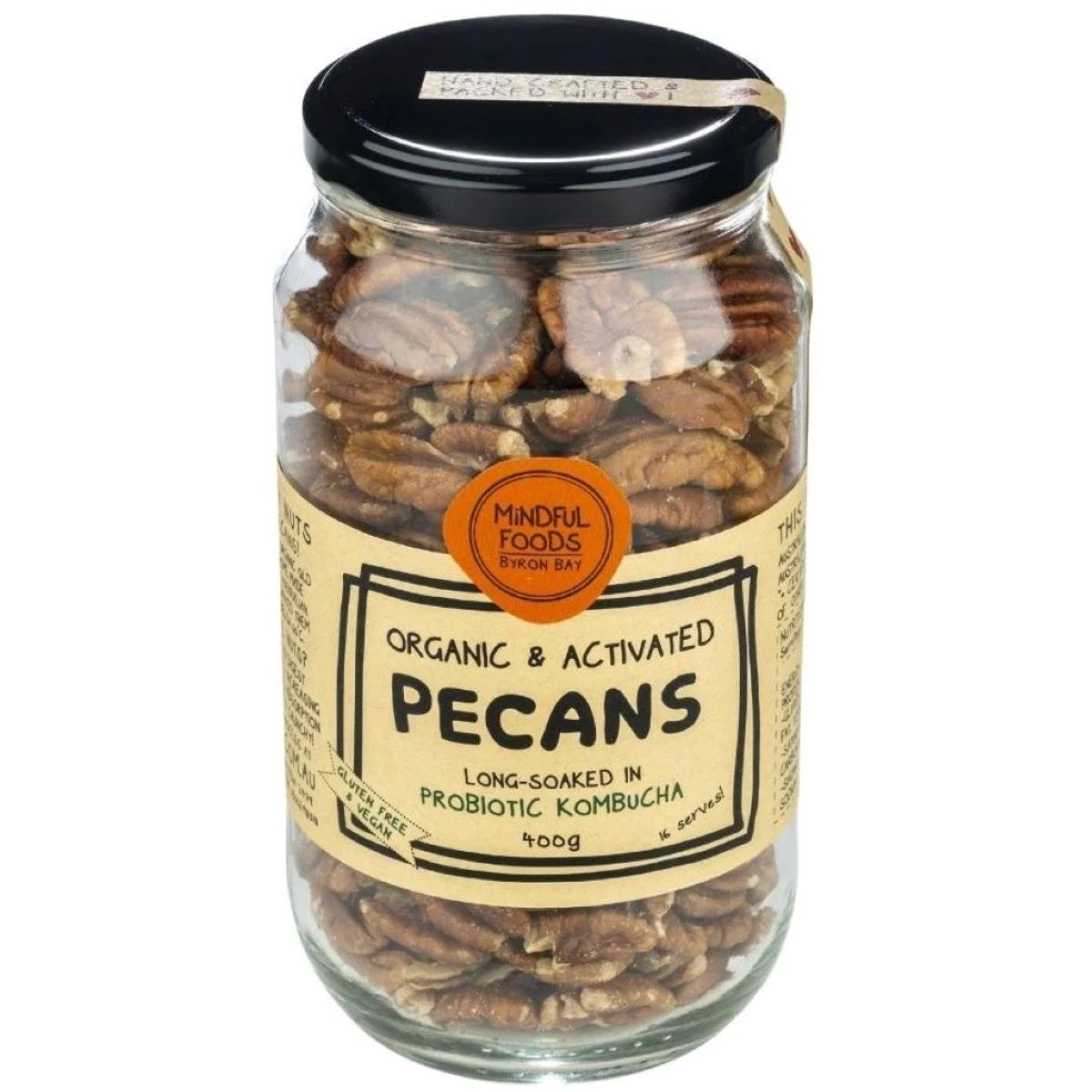
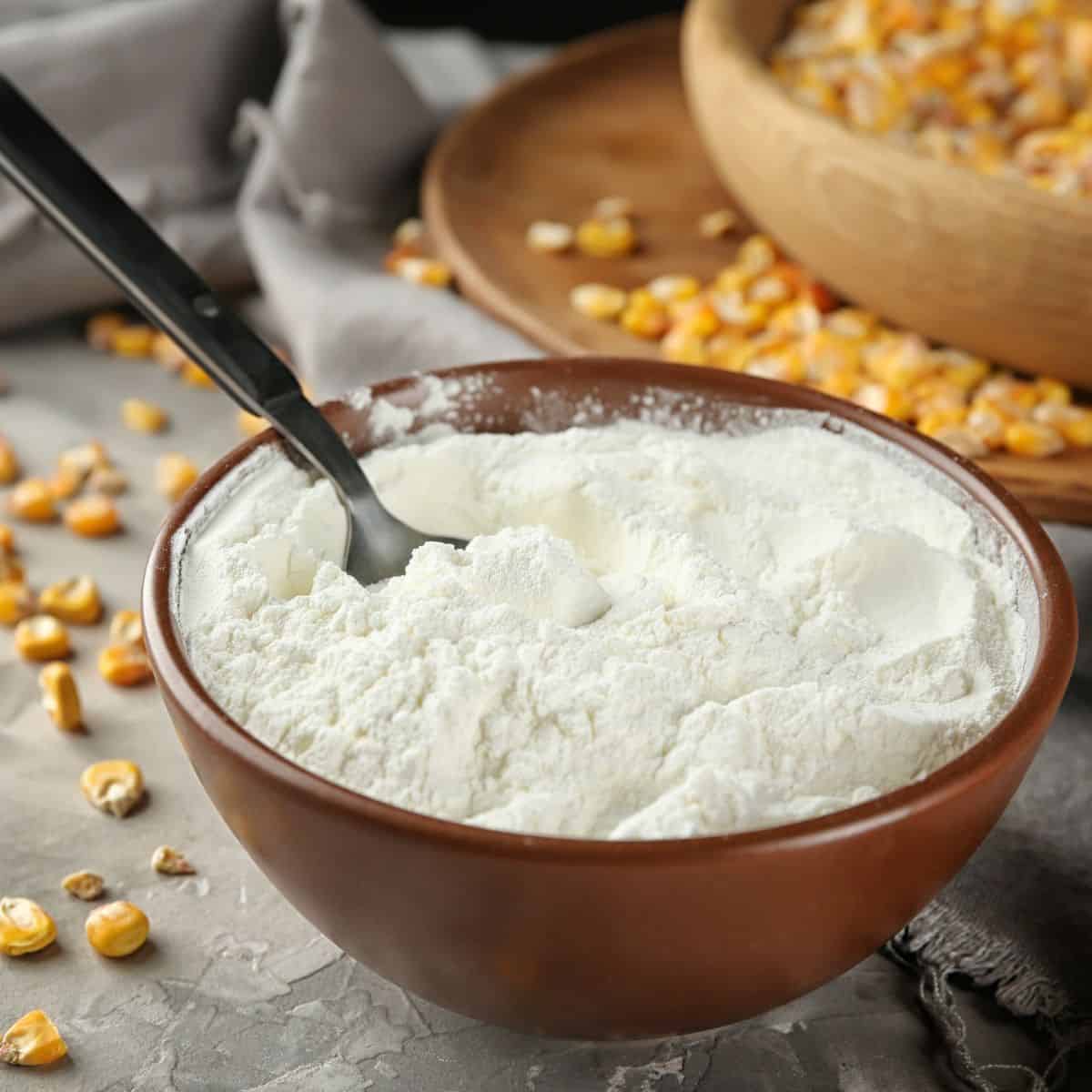
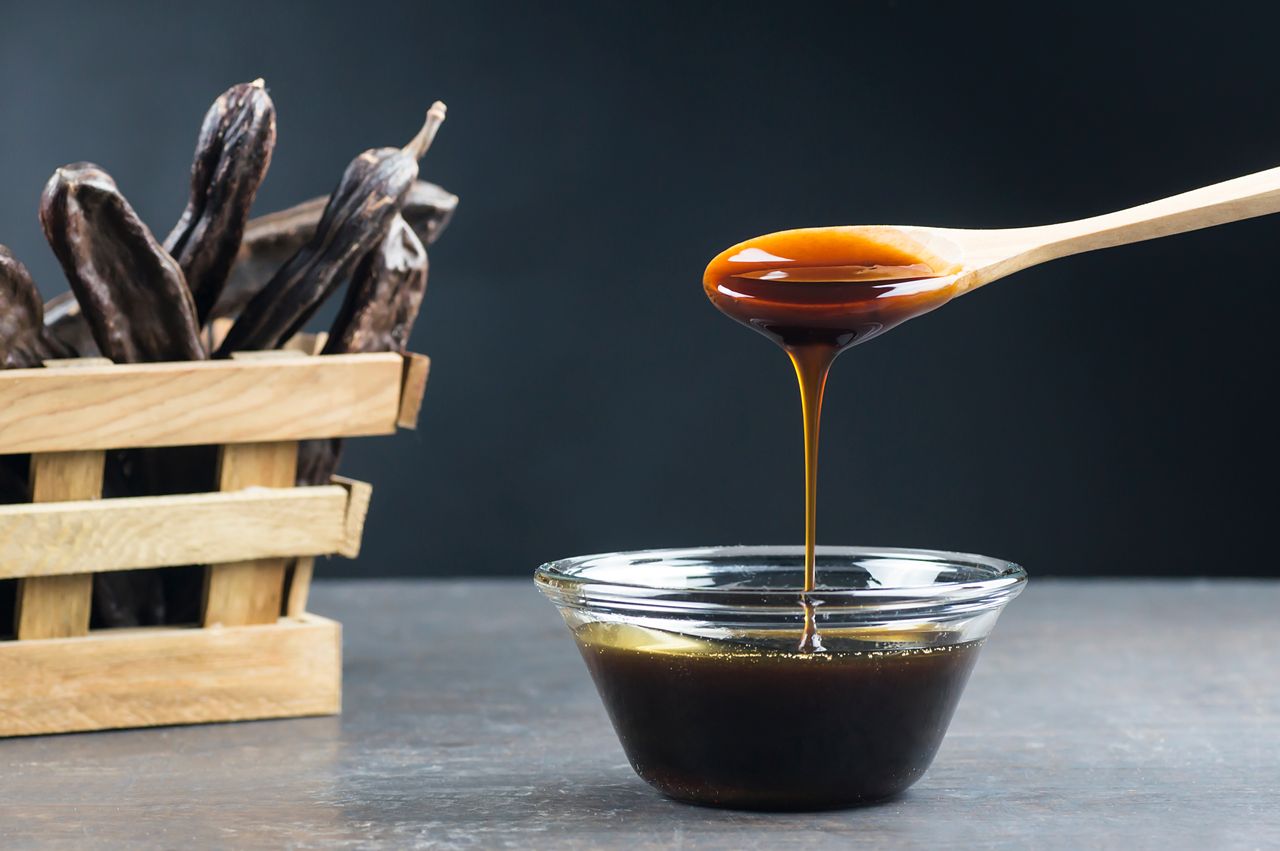
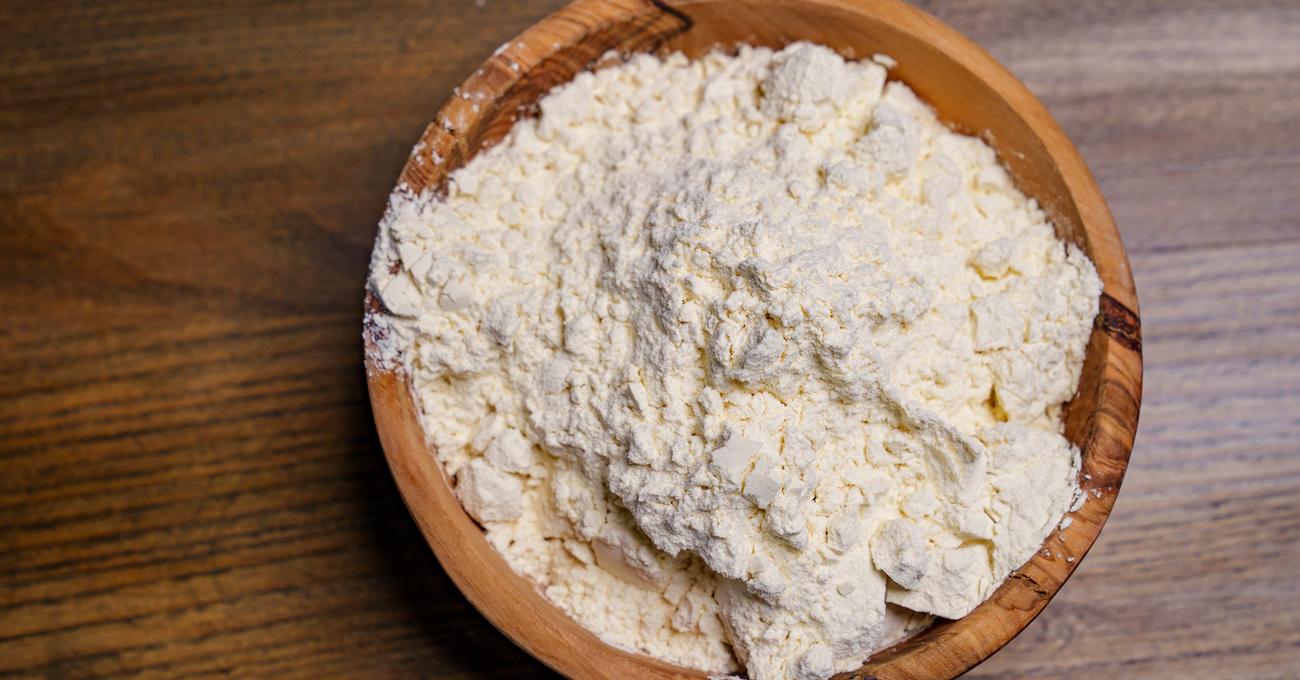
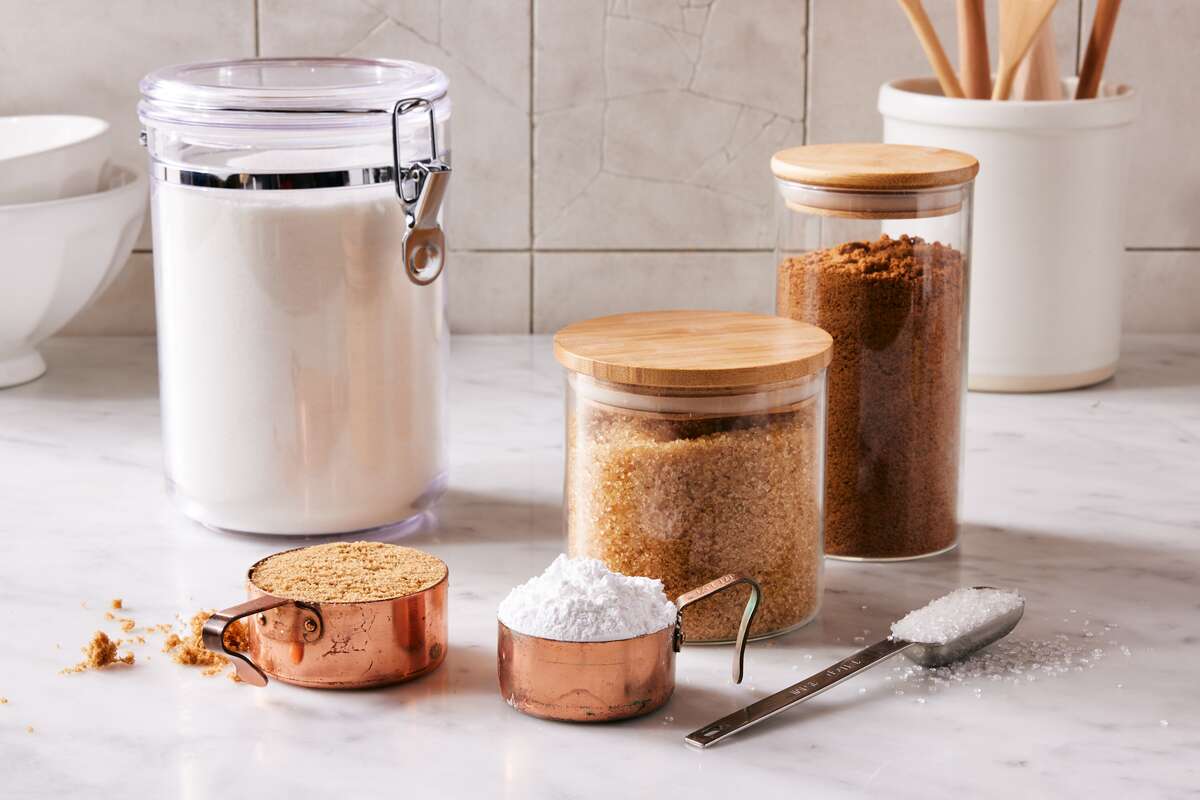
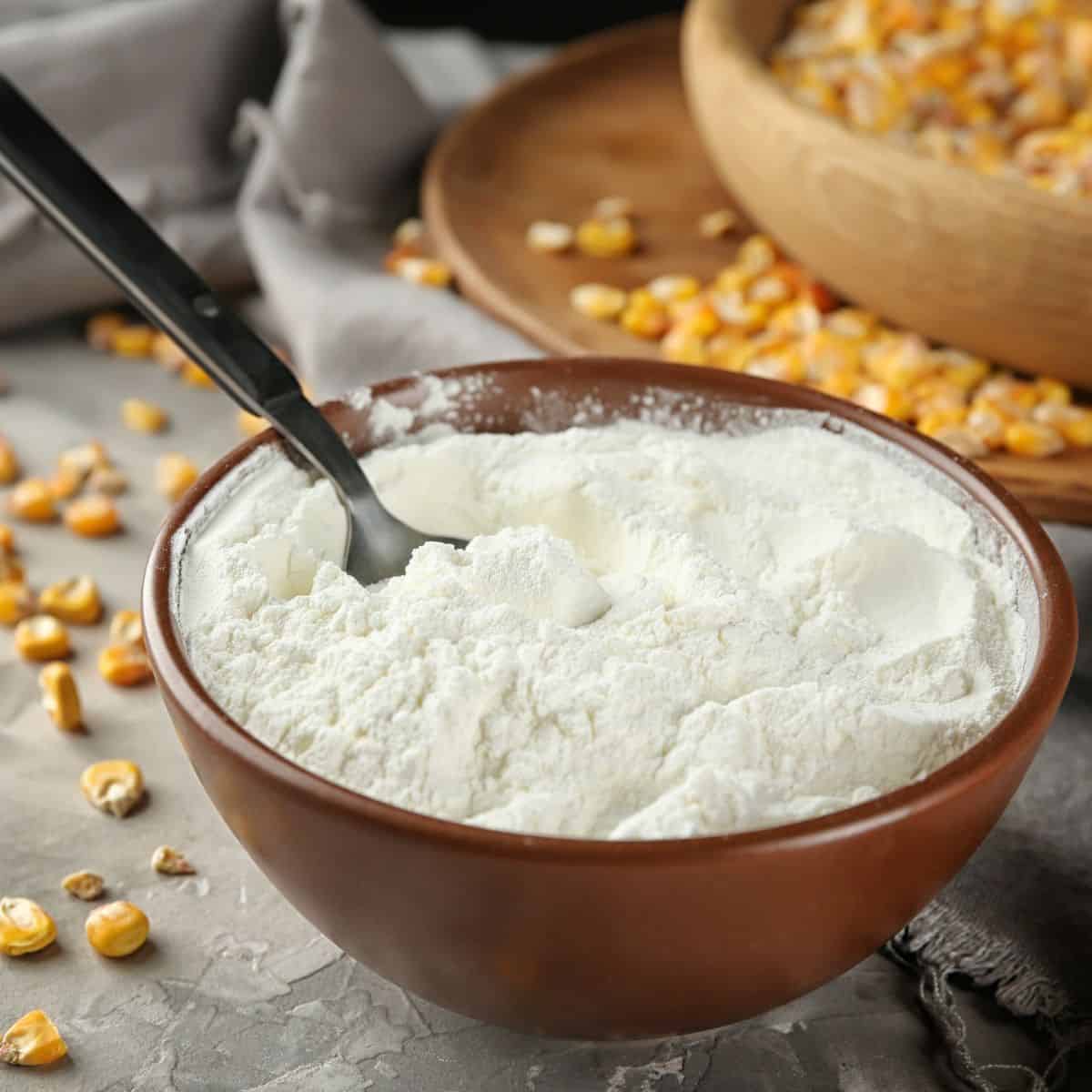
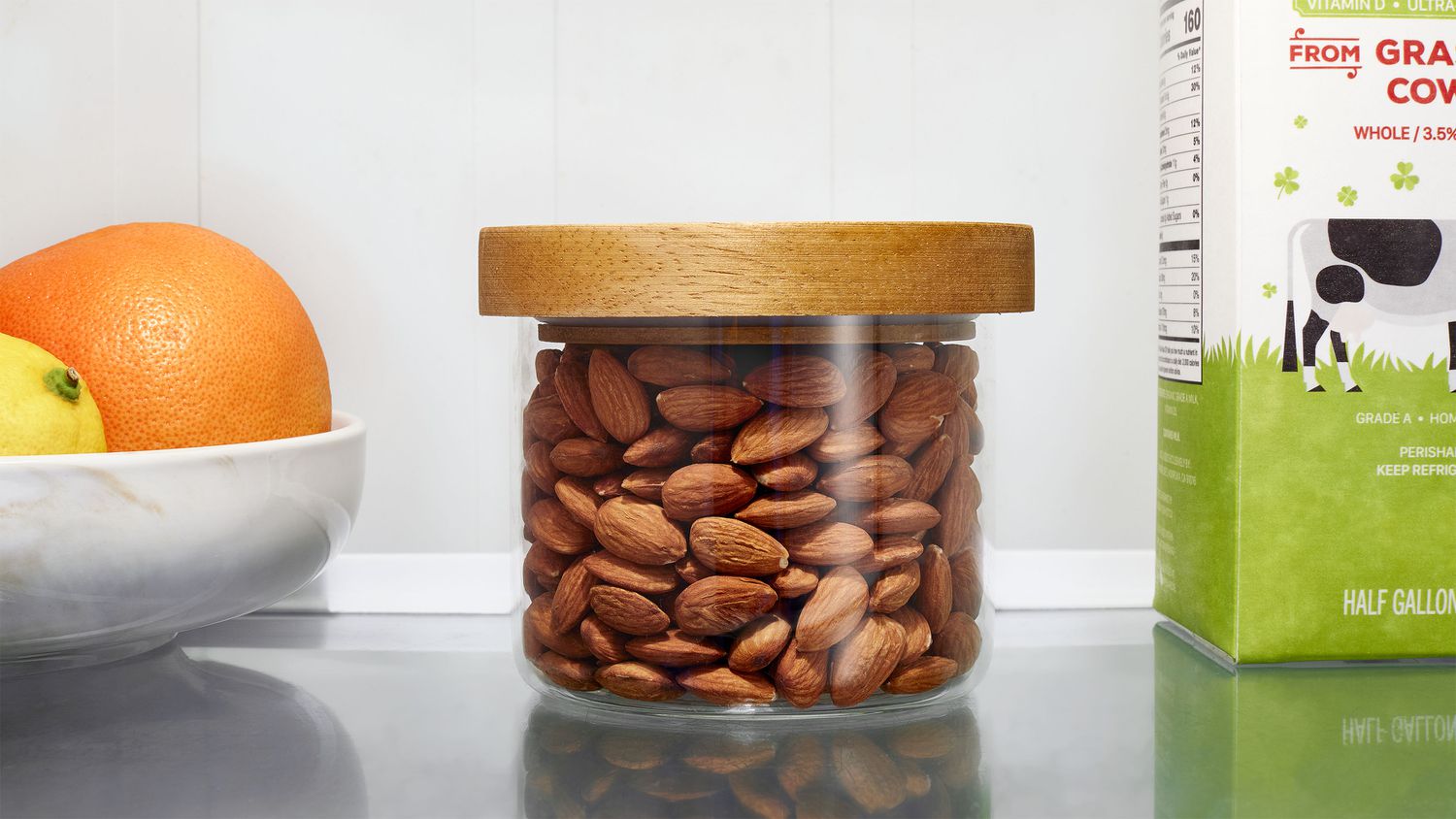
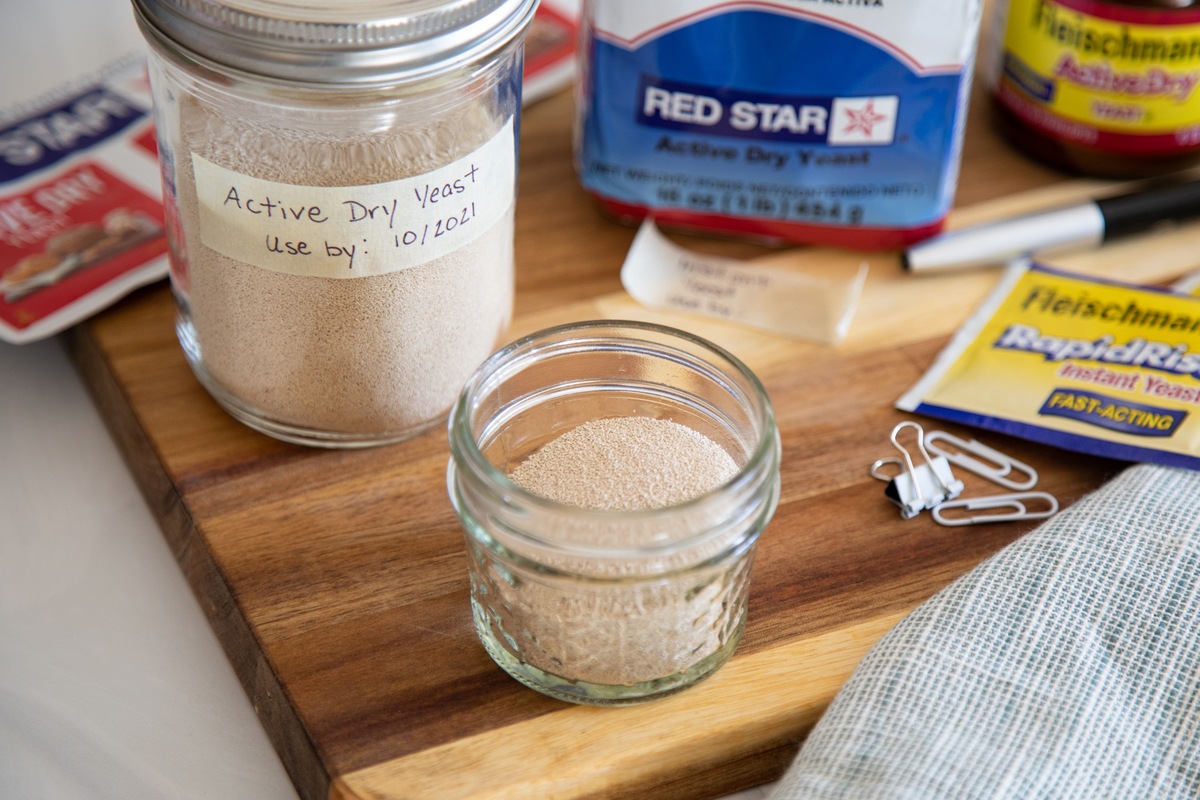

0 thoughts on “How To Store Food For Long Term”